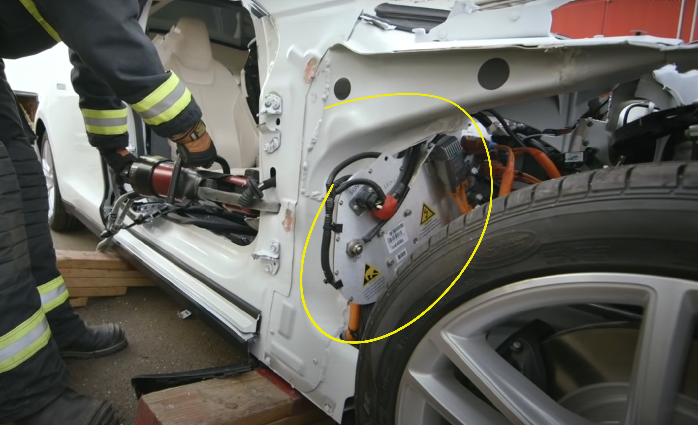This is a follow up question of "What is the best price-to-value 2000 w pure sine inverter for a mid-2015 Tesla Model S with a DC-DC inverter?"
Question
My understanding is there are (at least) three distinctly different wiring one may use to connect a 1500-2000 w pure sine inverter in to a Model S Tesla: (i) directly to the 12v battery, (ii) directly to the high-voltage DC to low-voltage DC converter, and (iii) directly to the high-voltage battery.
The auxiliary 12v battery one should be fairly "straight forward": One connects to provided cables to the 12v, but this will kill the auxiliary battery in short order if used at 1.5-2 kw.
After over 10 years of Model S and a number of reiterations of its electric design, how to best install a pure sine inverter directly to the DC-DC converter, to the high voltage battery, or otherwise sparing the car's built-in 12 volt battery from "cycling the low voltage battery like mad, and [potentially] suffer low voltage cutoff on the inverter" so as to be able to draw continuous 1500 watts with the vehicle stationary?
Answers sought
Based on this tutorial how to replace a fuse in the DC-DC converter, any explanation about to which part of the converter to connect the inverters cables (or marking them on screenshots), will be much appreciated.
Research (my findings so far)
"The DC-DC converter [is of a maximum of] 2500 watts[, 14 volts and 178 amps output; o]bviously some of that is needed for the car systems." (Understanding the Tesla Model S Power Electronic Components, Weber State University Davis, March 11, 2021, see also, TMC post, Nov. 26, 2016, DarkMatter)
"[I]f you wire [an inverter] in to the [propellant] battery [of the Model S] then [the size of the available wattage depends] on how long you plan to draw high currents for [among many factors]." (TMC post, Nov. 26, 2016, green1)
For a 2000 w inverter "[one would need] 2 awg wire[s], keep the runs short[, and probably at least a 250] amp fuse to allow for surge current". (TMC post, Feb. 27, 2018, n2mb_racing)
"There is a current sensor [in the Model S] monitoring the output of the DC-DC converter which can be viewed by apps such as Scan my Tesla. [¶ I]f the car sees continuous draw of certain current say greater than 7A (or if the DC-DC output power exceeds certain level), the DC-DC converter won't turn off even if the car is in sleeping mode. If that is the case, there is no worry about the cycling of the 12V battery." (TMC Post from February 27, 2018)
The "high-voltage battery" (per Tesla parlance) monitors and charges the led-acid 12v auxiliary battery (the 2021 or '22 and up Model S and X use lithium-ion for the auxiliary as well).
The modification would likely need ca. 8-9 mm diameter cable (+50 mm2), and preferably short between the point of contact of the car and the inverter.12
Images
Schematic view of location of the DC-DC converter:
Photo of the location of the 1st-gen DC-DC converter in a fire-response extrication video instructions:
DC-DC converter panel (front view) from a fuse replacement tutorial:
Schematic assembly view of the DC-DC converter panel:
Footnotes
1 "[A] 600 watt inverter can perfectly well continuously run with 10mm2 wires[ in a Model S Tesla;] 1000 watts at 12 volts should have 25mm2 and that's getting [a] bit large and expensive already" (mechanics.SE answer, Sept. 24, 2022, juhist)
2 Standard high-voltage harnessing is 8 mm in diameter, or ca ~50 mm2 (Understanding the Tesla Model S Power Electronic Components at 4:00)




